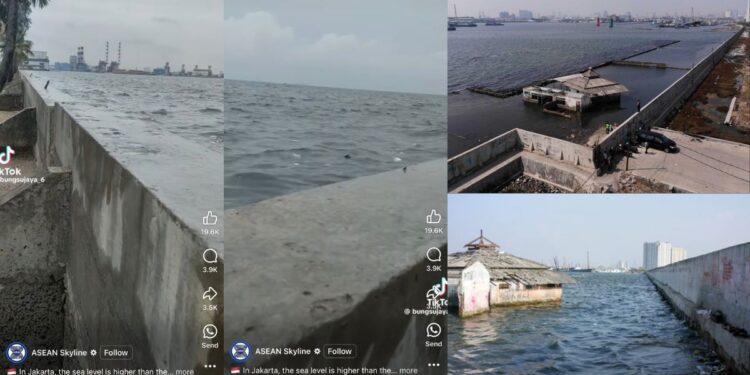Indonesia’s bustling capital and economic hub is sinking. A recent Facebook video by user ASEAN Skyline showed sea waves teetering at the edge of the city’s boundary: a thin concrete wall.
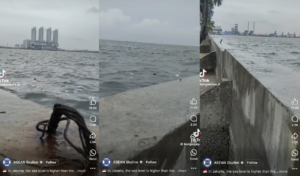
Jakarta is home to over 10 million people, and some areas in the city are sinking by as much as 25 centimetres annually. If left unchecked, large parts of the city could be underwater within a few decades.
Why Jakarta is Sinking
The primary reason behind this rapid sinking is over-extraction of groundwater. Surging population urges demand for water, causing residents and businesses to rely on underground water reserves. And doing so has depleted aquifers, making the ground compact and sink.
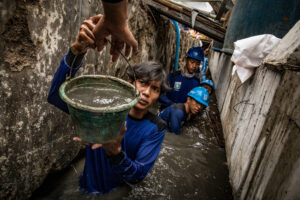
Rising sea levels further aggravate this situation, and climate change is showing its clear effects. Moreover, the city is located on swampy, low-lying land on the coast of the Java Sea, prone to coastal flooding.
Impact on Residents
Particularly in North Jakarta, some areas have subsided by more than two metres over the past decade. Daily life has become a relentless struggle against rising waters. Roads are frequently rendered impassable, transportation grinds to a halt, and businesses face the dual challenge of staying afloat—both literally and financially.
Beyond the physical destruction, these floods also expose the population to serious health risks, with waterborne diseases like cholera and dengue fever becoming increasingly common.

The city’s poorest communities bear the brunt of this environmental crisis, as they often reside in the most flood-prone areas. Lacking the resources to relocate or invest in flood defences, these residents are disproportionately affected, trapped in a cycle of vulnerability and uncertainty.
Government Plans to Combat Sinking
The Indonesian government is fully aware of Jakarta’s sinking crisis and has launched several initiatives to address it. Among the most ambitious is the construction of a massive seawall along the northern coast. This “Giant Sea Wall” aims to protect the city from rising sea levels. However, experts warn that it offers only temporary relief. Without tackling the root issue – over-extraction of groundwater – the seawall alone won’t stop the city’s subsidence.
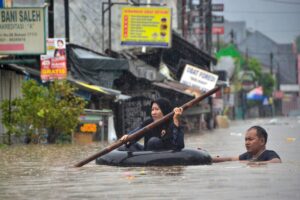
In response, the government has proposed a long-term plan: relocating the capital to Nusantara in East Kalimantan, Borneo. This move, championed by President Joko Widodo’s administration, intends to ease the strain on Jakarta’s resources by reducing its population. Yet, the relocation will take years to complete, leaving residents in need of immediate solutions.
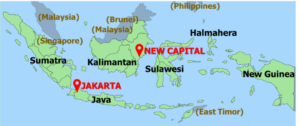
Jakarta’s sinking has led to worsening floods, yet resilience efforts largely rely on its citizens rather than long-term infrastructure fixes. Many locals have adapted by creating early warning systems and modifying their homes to reduce flood damage. Meanwhile, the government’s response remains mostly reactive, focusing on evacuations rather than prevention. Experts argue that a mix of structural measures, like seawalls, and non-structural approaches, such as better water management, is crucial. They warn that citizen resilience alone cannot tackle the growing flood risks facing the city.
Watch the video here:
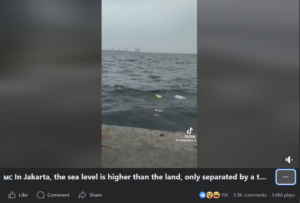
More from Wake Up Singapore:-
Man Caught on Video Skateboarding Down Busy Road, Police Launch Investigation
Venice is Sinking: How Residents, Tourists Navigate ‘Acqua Alta’
Man Rescues Trapped Rabbits from Raging Fire, Winning Hearts Online
If you have a story or a tip-off, email admin@wakeup.sg or get in touch via Whatsapp at 8882 5913.
Since you have made it to the end of the article, follow Wake Up Singapore on Telegram!
Wake Up Singapore is a volunteer-run site that covers alternative views in Singapore. If you want to volunteer with us, sign up here!
If you can, please do consider buying a mug or two to support Wake Up Singapore’s work!



